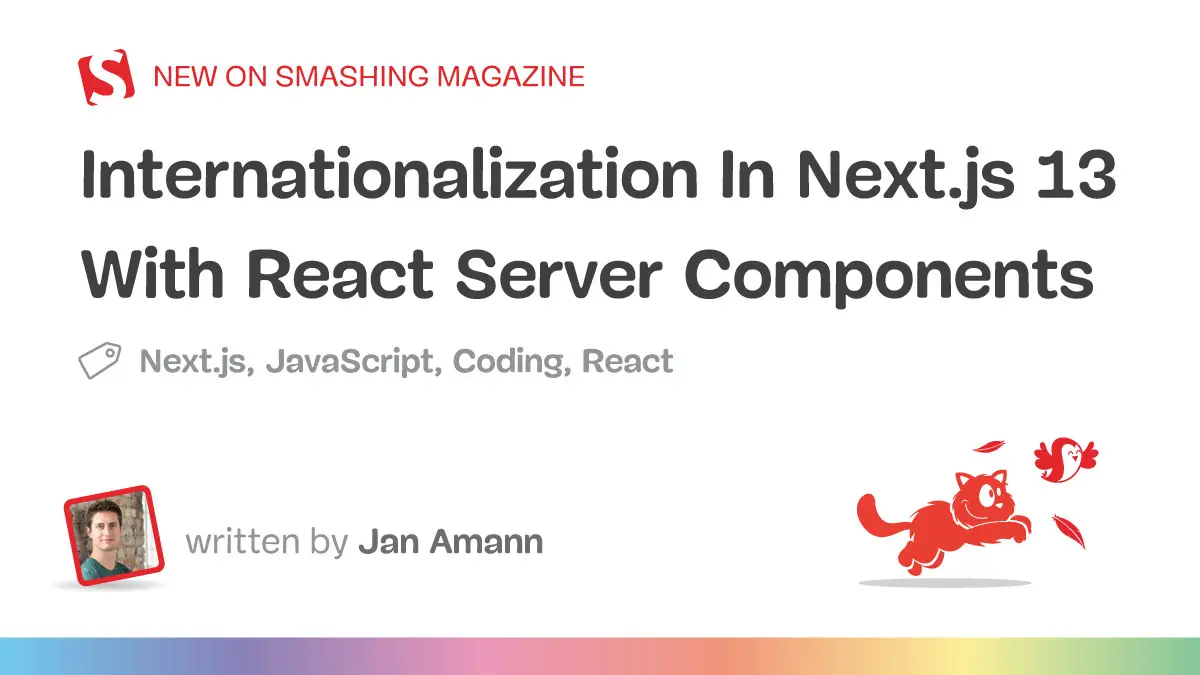The world of technology is constantly evolving, and it can be difficult to keep up with the latest trends and advancements.
Right from artificial intelligence to mobile app development, DevOps, and cybersecurity, there are many emerging technologies that are poised to transform the way we live and work.
In this post, we’ll explore 13 of the latest tech trends that you need to know about in 2023 and beyond. We’ll cover everything from the internet of things and 5G technology to facial recognition, natural language processing, and AI-as-a-Service.
By the end of this post, you’ll have a better understanding of the cutting-edge technologies that are shaping our future and how they can benefit you and your business. So, without further ado, let’s dive in and explore the exciting world of technology!
Latest Technology Trends That Can Transform Your Business
1. Artificial Intelligence (AI) and Machine Learning (ML)
AI and machine learning is becoming increasingly popular in various industries because they can provide businesses with valuable insights, automate processes, and improve decision-making. AI and machine learning can help businesses gain a competitive edge by providing more accurate predictions, identifying patterns and trends, and optimizing operations.
Some industries that are being transformed by AI and machine learning include:
As AI and machine learning continue to evolve, they will likely become even more prevalent in various industries, providing businesses with more opportunities to improve their operations and gain a competitive edge.
Future predictions for AI and Machine Learning technology
AI and machine learning have already transformed many industries by providing valuable insights, automating processes, and improving decision-making. In the future, they will continue to grow and evolve, bringing even more benefits to businesses and individuals alike.
Some predictions for the future of AI and machine learning include increased automation of tasks, enhanced personalization in marketing and healthcare, continued growth in big data analytics, advancements in natural language processing, and improvements in robotics.
At Excellent Webworld, we have worked on projects that incorporate AI technology, such as a taxi app that uses AI for route optimization for drivers, demand prediction, and autonomous dispatch.
As these technologies continue to develop, they will likely become even more prevalent and essential in various industries, providing businesses with more opportunities to improve their operations and gain a competitive edge.
2. Internet of Things (IoT)
The next technology trend that we’ll explore is the Internet of Things (IoT). With the increasing number of connected devices, IoT has become an integral part of our lives. In fact, IoT technology allows us to connect and communicate with everyday objects, from home appliances to industrial equipment, and even vehicles.
Moreover, IoT is rapidly transforming businesses by enabling them to gather valuable data and insights to optimize their operations and increase efficiency. IoT devices use sensors, connectivity technologies (such as Wi-Fi, Bluetooth, or cellular), and cloud computing to collect and analyze data and automate processes. In this section, we’ll dive into the basics of IoT, its applications in various industries, and the future of IoT technology.
Examples of IoT devices and applications are smart home devices, wearables, industrial sensors, and medical devices are just a few examples of IoT devices. Additionally, IoT applications include smart cities, logistics, energy management, and healthcare many more.
IoT offers a multitude of benefits, some of them are listed below in the image.
Future predictions for IoT technology
At Excellent Webworld, we have worked on several IoT projects, including Smart Homes, Smart Band, Smart Hardhat, and Smart Parking Systems. We have connected these devices with mobile apps using various communication technologies, such as Bluetooth, LoRaWAN, and Wi-Fi.
Looking to stay ahead of the curve in the fast-paced world of technology? Let Excellent Webworld be your trusted partner for your IoT software development needs.
3. 5G Technology
5G Technology is the fifth generation of mobile networking technology that is expected to bring significant advancements over previous technologies like 4G and 3G. It is designed to offer higher data transfer rates, lower latency, and increased capacity to connect multiple devices simultaneously.
The advantages of 5G Technology include faster download and upload speeds, improved network reliability, and increased network coverage.
5G Technology has a wide range of applications across various industries. Enhanced Mobile Broadband (eMBB) is one of the primary applications of 5G Technology, which provides faster internet speeds and higher bandwidth for streaming and downloading.
Massive Machine Type Communications (mMTC) is another application of 5G, which allows for a massive number of IoT devices to be connected to the network. Ultra-Reliable Low-Latency Communications (URLLC) is the third application of 5G, which provides extremely low latency and high reliability for critical applications like remote surgery, autonomous vehicles, and more. Examples of companies that are using 5G Technology include Verizon, AT&T, Samsung, and Huawei.
Future Predictions for 5G Technology
The impact of 5G Technology is expected to be enormous, with the potential to revolutionize many industries like healthcare, manufacturing, transportation, and entertainment. Advancements in technologies like augmented reality, virtual reality, and IoT are expected to be enabled by 5G, which will change the way we interact with technology.
However, there are also potential challenges like cybersecurity and privacy that need to be addressed. Overall, 5G Technology is poised to bring significant changes to the way we live and work in the future.
4. Cybersecurity and Data Privacy
Cybersecurity and data privacy are critical components of any organization’s overall security strategy. It refers to the measures taken to protect computer systems, networks, and data from theft, damage, or unauthorized access. Data privacy, on the other hand, is the protection of personal information from unauthorized access or use.
In today’s digital age, where most organizations rely heavily on technology and the internet to conduct business, cybersecurity, and data privacy have become increasingly important. A data breach can result in significant financial losses, damage to an organization’s reputation, and legal repercussions. Therefore, it is essential for organizations to implement robust cybersecurity measures and prioritize data privacy.
Examples of cybersecurity threats and data privacy concerns include phishing attacks, ransomware, malware, and identity theft. These threats can compromise an organization’s sensitive information, including personal information, financial data, and confidential business information.
Adding more to it, the future of cybersecurity and data privacy will continue to evolve as technology advances. It is expected that cybersecurity threats will become more sophisticated, and organizations will need to develop more advanced security measures to stay ahead of cybercriminals.
Hence, data privacy laws and regulations are also expected to become more stringent, placing a greater emphasis on organizations protecting personal information.
Ready to take your product or app to the next level?
Know, how we can help you upgrade your technology and stay ahead of the competition.
5) Voice Search and Conversational Interfaces
With the rise of virtual assistants such as Alexa, OK Google, and Siri, voice search, and conversational interfaces have gained popularity as a way for users to interact with technology.
Note that, voice search involves using voice commands to search for information, while conversational interfaces enable users to converse naturally with computers or applications.
A Few examples of how voice search and conversational interfaces are being used in various industries include:
Remember, the future of voice search and conversational interfaces appears promising, thanks to the advancements in natural language processing, which are making the technology more accurate and intuitive.
In the coming years, voice search and conversational interfaces are expected to become even more prevalent, offering even higher levels of personalization and convenience in our daily lives.
Looking to integrate Voice Search and Conversational Interfaces into your app or product?
Excellent Webworld can help. Our team of experienced developers and designers can help you incorporate these cutting-edge technologies into your project, providing a user experience that is intuitive and engaging, setting you apart from the competition. Contact us today to learn more about how we can assist you in staying ahead of the curve in this rapidly evolving tech landscape.
6) Facial Recognition Technology
Facial recognition technology has advanced rapidly in recent years, and it is becoming more prevalent in various industries. Some of the latest trends in facial recognition technology include:
01. Contactless Identification:
The COVID-19 pandemic has accelerated the adoption of contactless technology, and facial recognition is no exception. The latest facial recognition systems can accurately identify individuals without the need for physical contact, making it a more hygienic solution.
02. Emotion Recognition:
Emotion recognition is an emerging trend in facial recognition technology. It involves analyzing facial expressions to determine an individual’s emotional state. This technology is being used in various fields, including healthcare, retail, and education.
03. Improved Security:
Facial recognition technology is being increasingly used in security systems, such as access control and surveillance. The latest systems use advanced algorithms to accurately identify individuals and prevent unauthorized access.
04. Personalized Experiences:
Facial recognition technology is being used to create personalized experiences in various industries, such as retail and hospitality. For example, a facial recognition system can identify returning customers and provide personalized recommendations based on their past purchases.
Therefore, the future of facial recognition technology looks bright, with further advancements expected in accuracy, speed, and usability. Although, there are also concerns regarding privacy and ethical considerations. As a result, there is a growing need for regulations and guidelines to ensure the responsible use of facial recognition technology.
If you’re looking to incorporate facial recognition technology into your project, Excellent Webworld can help. Our team of experts can provide you with customized solutions that meet your unique business needs while ensuring data privacy and security. Contact us today!
7) Big Data Analytics
In recent years, the amount of data generated by individuals and organizations has grown exponentially. This has led to the rise of Big Data Analytics, which involves the use of advanced analytics techniques to process and analyze large and complex datasets.
Coupled with the latest trends in Big Data Analytics include the increasing use of artificial intelligence and machine learning, the adoption of cloud-based solutions, the focus on data privacy and security, and the emergence of edge computing.
The use of AI and machine learning is enabling more accurate and efficient analysis of large data sets. Cloud-based solutions are making it easier to store and process large volumes of data.
Data privacy and security are becoming a top priority, and edge computing is allowing for faster processing of data at the source. These trends are expected to continue in the coming years, with Big Data Analytics playing an increasingly important role in driving business growth and innovation.
On the whole, the future of Big Data Analytics looks promising, with the increasing amount of data being generated and the growing need for organizations to make data-driven decisions. As the technology continues to advance, we can expect to see even more innovative use cases of Big Data Analytics in various industries
8) Web 3.0
Web 3.0, also known as the “Semantic Web,” is the next generation of the internet that aims to create a more intelligent and connected web. It involves the use of artificial intelligence, machine learning, and big data to enable machines to understand and interpret the vast amount of data available on the internet.
One of the latest trends in Web 3.0 is the development of decentralized platforms and applications that are based on blockchain technology. These platforms aim to provide more control and privacy to users by eliminating the need for centralized authorities.
Another trend is the integration of Web 3.0 technologies with the Internet of Things (IoT), which will enable devices to communicate with each other and make autonomous decisions based on data analysis.
The use of natural language processing and chatbots is also becoming more prevalent in Web 3.0, allowing for more human-like interactions with machines.
In addition, there is a growing focus on data privacy and security in Web 3.0, with the development of technologies such as zero-knowledge proofs and homomorphic encryption.
To sum up, the future of Web 3.0 looks promising, as more and more companies and individuals are recognizing the potential of this technology. With the development of Web 3.0, we can expect to see a more democratized internet that is accessible to everyone, where data is owned by the users and not controlled by a few centralized entities
9)Low-code/no-code Platforms (LCNC)
Low-code/no-code (LCNC) platforms are a type of software development environment that allows users to create applications and software with minimal coding knowledge or experience.
These platforms use visual interfaces and drag-and-drop components to create applications, which can save time and reduce costs compared to traditional coding methods. Some of the key benefits of LCNC platforms include increased agility, faster time-to-market, and reduced reliance on specialized developers.
LCNC platforms are becoming increasingly popular in various industries due to their ease of use and versatility. For example, businesses can use LCNC platforms to quickly create custom software solutions, automate workflows, and streamline processes. Non-technical users can also benefit from LCNC platforms, as they can easily create web and mobile applications without having to learn complex programming languages.
The market for LCNC platforms is expected to grow significantly in the coming years, with a projected market value of $187 billion by 2030. This growth can be attributed to the increasing demand for faster and more efficient software development, as well as the growing trend of citizen development.
Excellent Webworld offers LCNC development services to help businesses create custom software solutions quickly and efficiently. Our team of experienced developers and designers can help you leverage LCNC platforms to develop scalable and secure applications that meet your business needs.
10) Digital Twins Technology
Digital Twins Technology is a virtual replica of physical objects, systems, and processes that can be used for analysis, optimization, and prediction.
This technology enables organizations to simulate and analyze different scenarios and outcomes in a virtual environment before implementing them in the real world. Digital Twins are used in various industries such as manufacturing, healthcare, transportation, and construction.
For example, in the manufacturing industry, Digital Twins are used to creating virtual replicas of machines, allowing for real-time monitoring and analysis. This helps manufacturers to identify potential issues before they occur, optimize performance, and reduce downtime. In healthcare, Digital Twins are used to create virtual models of patients, which can be used for diagnosis and treatment planning.
The future of Digital Twins Technology looks promising. With advancements in Artificial Intelligence (AI) and the Internet of Things (IoT), Digital Twins will become even more sophisticated and accurate. It is expected that Digital Twins will be widely used in various industries in the coming years, allowing for more efficient and effective processes.
11) Natural Language Processing (NLP)
Natural Language Processing (NLP) is a field of artificial intelligence (AI) that focuses on enabling machines to understand, interpret, and generate human language. NLP is used in various applications such as language translation, sentiment analysis, chatbots, and voice assistants. Some popular examples of NLP applications include Google Translate, Amazon Alexa, and Apple’s Siri.
NLP technology has advanced rapidly in recent years, thanks to the advancements in machine learning and deep learning algorithms. With these advancements, NLP has become more accurate and efficient in understanding natural language.
As an AI language model, ChatGPT is a prime example of Natural Language Processing technology in action. With its advanced language understanding capabilities, it can analyze and interpret human language input to generate relevant responses.
Whether you’re looking to develop a chatbot, virtual assistant, or other NLP-powered application, our team of skilled developers and designers can provide customized solutions tailored to your specific needs.
12) DevOps
DevOps is a software development approach that emphasizes collaboration and communication between software developers and IT professionals.
It aims to automate the software delivery process and provide a faster and more reliable way to release software updates and new features.
DevOps involves a set of practices, tools, and cultural values that focus on achieving continuous delivery and continuous integration. It encourages developers and IT professionals to work together in a seamless and efficient manner to improve the quality of software and reduce the time it takes to deliver new updates and features.
Some of the key benefits of DevOps include improved collaboration, faster time to market, increased efficiency, and enhanced software quality. By automating the software delivery process and improving communication between teams, DevOps helps organizations deliver high-quality software products more quickly and with greater reliability.
Examples of DevOps tools and technologies include continuous integration and delivery (CI/CD) pipelines, configuration management tools like Puppet or Chef, and containerization platforms like Docker, Amazon Web Services (AWS), GitLab, Microsoft Azure DevOps or Kubernetes.
Our expert DevOps engineers are specialized in developing and implementing DevOps strategies for businesses of all sizes. They can help you streamline your software delivery process and achieve greater efficiency and agility in your projects. Head over to our work section to see a showcase of our completed projects.
13) AI-as-a-Service (AIaaS)
AI-as-a-Service (AIaaS) is a cloud-based service that provides businesses with access to AI tools and technology on demand. It allows companies to integrate artificial intelligence into their products and services without having to develop and maintain their own AI infrastructure.
Examples of AIaaS include IBM Watson, Microsoft Azure Cognitive Services, and Amazon Web Services (AWS) AI/ML services. These platforms provide a range of AI services such as natural language processing, computer vision, speech recognition, and machine learning.
The benefits of AIaaS include reduced costs, scalability, and accessibility to cutting-edge technology. As AI technology continues to advance, AIaaS is expected to become even more prevalent in various industries, providing businesses with the opportunity to improve their operations and services using AI without significant upfront investments.
The Ending – Top Tech Trends
In this blog, we have discussed the top tech trends that are expected to make a significant impact in 2023 and beyond.
We have explored the importance and benefits of these technologies and provided examples of how they are being used in various industries. Additionally, we have mentioned the latest trends and advancements in each of these technologies, providing insight into how they are evolving and what we can expect in the future.
Finally, we have highlighted the expertise of Excellent Webworld, a leading technology solutions provider that can help businesses leverage these cutting-edge technologies to create intuitive and engaging user experiences that set them apart from the competition.
In conclusion, as we move into 2023, businesses must stay up-to-date with the latest technology trends and innovations to remain competitive and meet the evolving needs of their customers.
By embracing these trends and partnering with expert technology solutions providers like Excellent Webworld, businesses can unlock new opportunities for growth and success in the digital age.










Leave a Reply